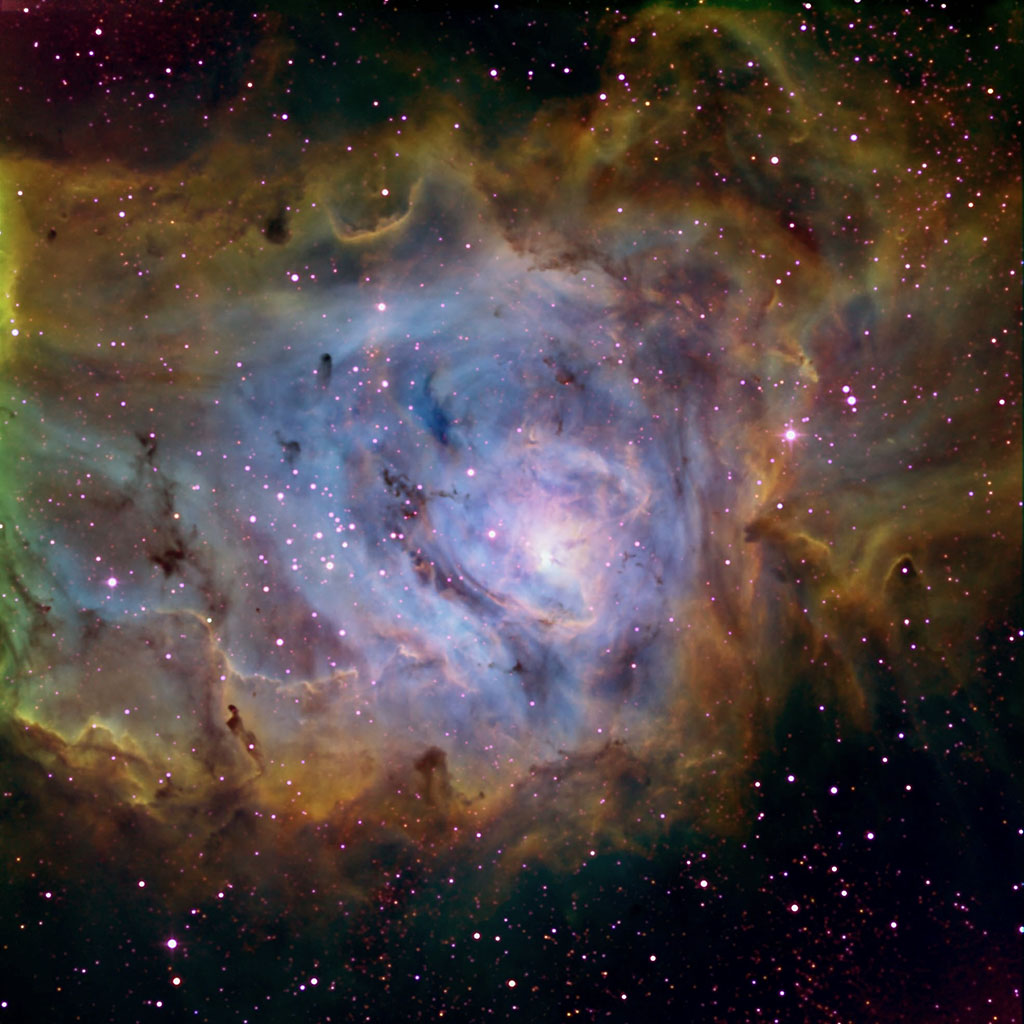M8 - Lagoon Nebula

For high resolution, click here.
M8 - Lagoon Nebula: The Lagoon nebula is the second brightest star forming region visible from Durango (after the Orion nebula). It is visible to the naked eye in the constellation Sagittarius as a faint fuzzy patch in the Milky Way to the west of the topmost star in the teapot asterism. It is 4000-5000 light years distant. This narrow-band image is in the "Hubble" palette, with the colors representing specific elements. Ionized sulfur S[II] is assigned to red, hydrogen alpha is assigned to green, and ionized oxygen O[III] is assigned to blue. Because most of the gas is hydrogen, a natural light image would appear mostly magenta from the contributions of the H-alpha and H-beta lines.
Messier: 8
NGC: 6523
Other Catalogs: Sharpness 25
Right Ascension: 18h 3m 37s
Declination: -24° 23' 12"
Apparent Magnitude: 4.6
Date: June 2024
Equipment:
Telescope: Planewave 14" CDK (Corrected Dall-Kirkham)
Camera: SBIG STX-16803
Guiding: Orion 80mm" refractor/Starshoot/PHD2
Exposure:
red: S[II] 17x5m
green: H-alpha 19x5m
blue: O[III] 18x5m
Processing Notes: All data were captured using TheSkyX. The data images were then reduced and aligned and summed in CCDStack with a StdDev data reject. The individual color channels were converted to TIFF format using FITS Liberator with an asin(x) stretch. Each channel was initially processed individually. Overall brightness and contrast was adjusted using curves. Dim areas were slightly blurred, and brighter areas were slightly sharpened. Contrast was then enhanced using a highpass filter overlay on a duplicate layer. The S[II] channel got a minimum filter in order to reduce the size of the pink halo around the stars typically seen in a narrow-band image. The individual channels were then stacked and color-assigned in Photoshop. Final processing and cropping in Photoshop.
Scale: 0.146"/pixel
Links to images of this object on other sites:
http://apod.nasa.gov/apod/ap140924.html
http://www.narrowbandimaging.com/images/M8remixdbs_S2_Ha_O3.jpg
Additional Comments: This was the first image after the telescope was re-balanced and a new T-Point model made. The primary goal was to verify that a meridian flip could be done remotely. That was successful. However, there were issues with the power cable to the telescope focuser, so the files might not have been at optimum focus.
A closeup of M8 on this site is found here:
https://www.fortlewis.edu/observatory/image_detail.asp?ID=142
Views: 2112
 This work is licensed under a Creative Commons Attribution-NonCommercial-ShareAlike 4.0 International License.
This work is licensed under a Creative Commons Attribution-NonCommercial-ShareAlike 4.0 International License.

